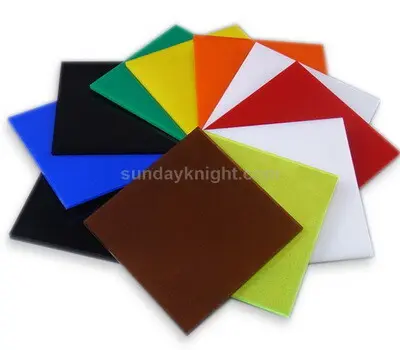Introduction:
Acrylic sheets have become increasingly popular in various industries due to their versatility and aesthetic appeal. In recent years, flame retardant acrylic has emerged as a safer alternative to regular acrylic, particularly in applications where fire safety is paramount. This article aims to shed light on the detailed distinctions between flame retardant acrylic and regular acrylic sheets, highlighting their unique properties and benefits.

1. Composition:
Regular acrylic: Regular acrylic sheets are composed of polymethyl methacrylate (PMMA), a thermoplastic polymer known for its transparency, durability, and excellent weather resistance.
Flame retardant acrylic: Flame retardant acrylic sheets, on the other hand, contain additives that enhance their fire-resistant properties. These additives are carefully incorporated into the PMMA matrix during the manufacturing process, allowing the material to resist ignition and slow down the spread of flames.
2. Fire Resistance:
Regular acrylic: While regular acrylic has numerous desirable qualities, it is inherently flammable. When exposed to a flame or high heat, regular acrylic sheets can ignite and contribute to the rapid spread of fire, posing significant safety risks.
Flame retardant acrylic: Flame retardant acrylic sheets are engineered to exhibit superior fire resistance. The added flame retardant additives act as a barrier, reducing the material’s flammability and limiting the propagation of flames. This makes flame retardant acrylic an ideal choice for applications where fire safety is crucial, such as building interiors, transportation, and electrical enclosures.
3. Safety Standards:
Regular acrylic: Regular acrylic sheets typically adhere to standard safety regulations, such as those related to impact resistance, clarity, and weatherability. However, they may not meet specific fire safety codes in certain applications.
Flame retardant acrylic: Flame retardant acrylic sheets are designed to meet rigorous fire safety standards, often complying with international regulations and certifications such as UL 94, V-0 rating, and NFPA 701. These certifications ensure that the material exhibits excellent flame resistance, low smoke generation, and minimal toxic gas emission during a fire.
4. Applications:
Regular acrylic: Regular acrylic sheets are widely used in a range of applications, including signage, displays, architectural glazing, retail fixtures, and more. However, their use is limited in environments where fire safety is a primary concern.
Flame retardant acrylic: Flame retardant acrylic sheets find their application in areas where fire safety is paramount. They are extensively utilized in public buildings, transportation vehicles, electronics, and other settings where strict fire regulations must be met. Additionally, flame retardant acrylic maintains the visual clarity and versatility of regular acrylic, making it an excellent choice for applications requiring both safety and aesthetics.
Conclusion:
The differences between flame retardant acrylic and regular acrylic sheets lie in their composition, fire resistance, safety standards, and applications. While regular acrylic offers durability and transparency, flame retardant acrylic provides an added layer of fire safety, making it suitable for environments where fire hazards are a concern. By understanding these distinctions, users can make informed decisions regarding the appropriate acrylic material for their specific needs, balancing aesthetics and safety in various applications.
